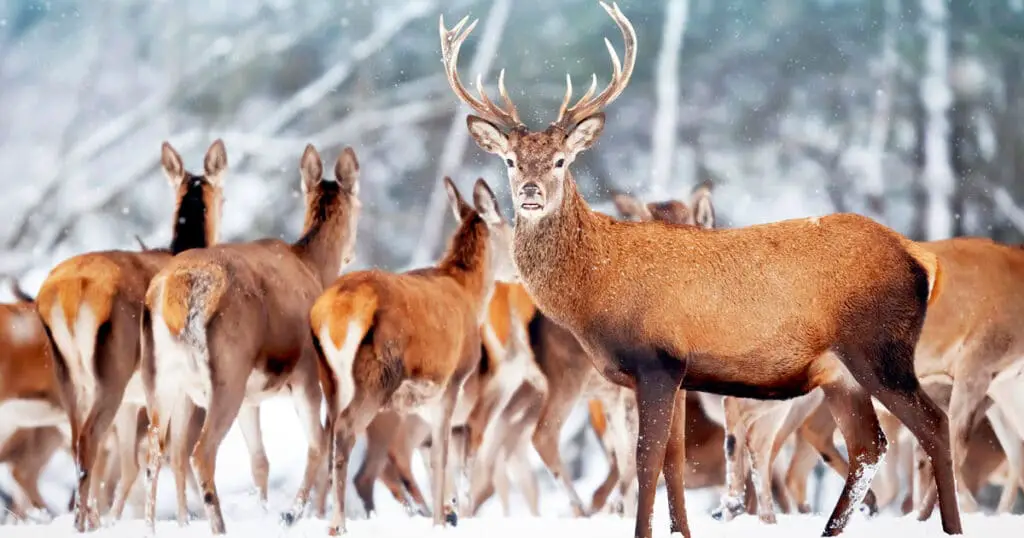Deer behavior, including whether they live in herds, varies across species. Some are generally solitary creatures, others live in herds, and some form herds during mating season and live alone for the rest of the year. In this article, we’ll talk about some of the most common types of deer and how they behave when it comes to forming and living in a group. We’ll also take a look at reasons why some deer form herds and others do not, and how many deer are in a herd for some different types of deer.
How Many Elk Are in a Herd?
As a highly social deer species, the North American Elk (Wapiti) are almost always found in a herd. Elk herds can be extremely large, with sometimes as many as 200 or even more animals. In some cases, an elk herd can include 400 animals.
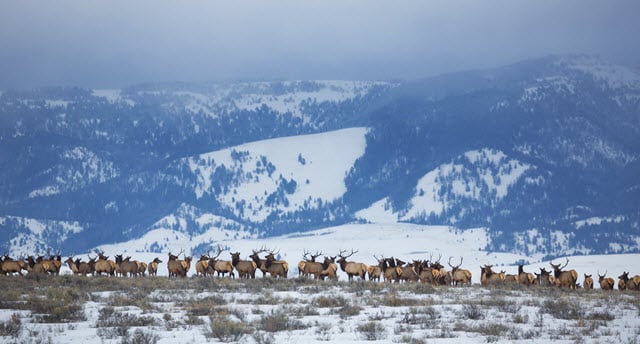
In elk herds, males and females often keep themselves separate. Said another way, the males will be in one sub-group of the herd, while the females will have their own sub-group.
Elk are a matriarchal species, so one female is the leader of the herd as a whole.
Elk grouping becomes a bit different during the mating season. During this time of year, each dominant male may have a harem of about six females. This group will also include yearlings the female have. The dominant male will display territorial behavior around this small group until the end of mating season.
How Many Caribou Are in a Herd?
Caribou herds are so large and stable that scientists are able to give them names. They are usually named for the place where they are originally found. Alternatively, they are named after a geographic element of one of their ranges.
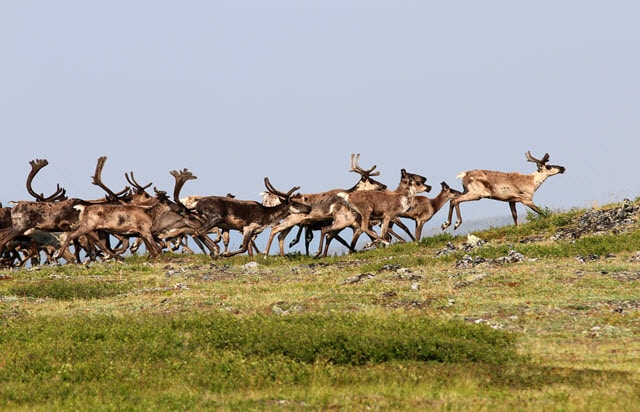
Caribou herds are simply enormous. An example of an especially large caribou herd is the Porcupine herd, which has approximately 218,000 caribou.
This herd of caribou migrates around 400 miles between their winter and summer ranges each year.
Another North American caribou herd is the Central Arctic herd. There are approximately 30,000 caribou in this herd, and it travels around 120 miles between its ranges for winter and summer.
Other large caribou herds include the Qamanirjuag Herd found in Nunavut, Canada, and the Western Arctic herd found in northwest Alaska. Each of these herds is believed to have more than 200,000 caribou.
Outside of North America, there is a large caribou herd called the Taimyr Peninsula herd, found in northern Siberia, which has recently been the target of poachers.
One of the reasons caribou stay together in herds is because it helps them with migration. Another reason is the fact it helps protect them from predators. The fact that each herd of caribou is able to spread itself over enormous tracts of land gives them protection from predators like bears, coyotes, and wolves.
Do Moose Live in Herds?
The moose differs from many other deer species in that it lives a solitary life (except for when they come together during mating season). During the mating season, dominant males may bring together small groups of females.
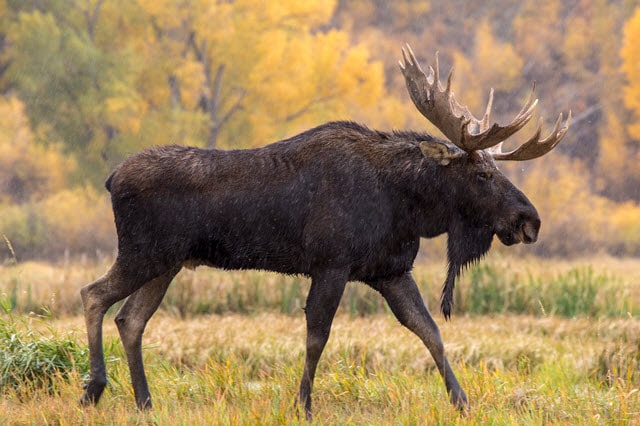
These are referred to as “harem herds.” Other males may challenge the male leader of a harem herd if they want to mate with any of the female moose in that group.
Moose prefer to stay alone during most times of the year. This is part of their independent nature. As each moose is extraordinarily large, it needs plenty of space and food to enjoy on its own.
Male moose generally weigh between 794 and 1,323 pounds, and they may measure as tall as 5 to 6 ½ feet from the hooves to the shoulders. Female moose may weigh as much as 882 pounds.
How Many Whitetail Deer Are in a Herd?
This deer species lives in herds. In fact, there are two kinds of herd formations in which whitetail deer may live. Male and female whitetail deer generally live separately in their own groups for the majority of the year.
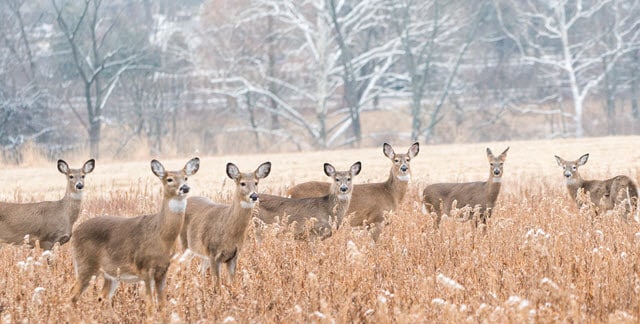
In the winter months, however, both males and females may come together into larger groups or herds. They do this to help maintain clear trials through the snow. Being in a larger herd also lends better protection from a variety of predators.
The small separate male and female herds generally only have between three to five animals. While female herds tend to stay stable, the individuals in male herds tend to change on a regular basis.
That is because male whitetail deer abide by hierarchies of dominance. As males spar for dominance, their position in the group, and even the group they belong to, may change.
Male whitetail deer groups will break up in the mating season, as they must individually find females to mate with. In northern whitetail deer regions, the mating season takes place in early November. Fawns are usually born in the spring, specifically in May.
The whitetail deer is the best-known deer in North America, and that is partly because of how many places all over the continent where it is able to live and thrive.
This deer species is found all over the United States and southernly to mid-range areas of Canada. In fact, you may even find whitetail deer in a location as far north as the Northwest Territories, specifically Great Slave Lake.
How Many Mule Deer in a Herd?
Mule Deer naturally tend to live in large herds. In the past when there were larger mule deer populations, herds of these animals were enormous. Western Colorado used to be known as the location with the largest herds of mule deer.
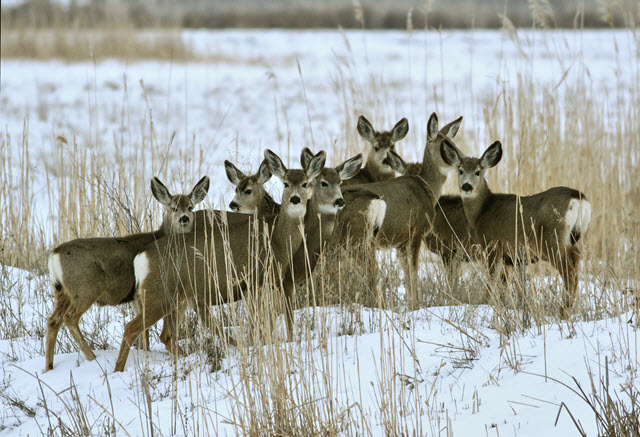
Mule deer stay in large herds all year long, and safety in numbers becomes especially important during migration. How and where mule deer migrate depends on the area of the country where they live.
For example, a herd of mule deer well-known in Wyoming migrates by following the path of greening vegetation on the Wind River Range’s western slope.
The fact that mule deer are a migratory species makes the protection of the herd especially important.
What Size are Red Deer Herds?
Red Deer live in herds. The groups may be quite large, and in some cases they may include 400 deer in the summer months.
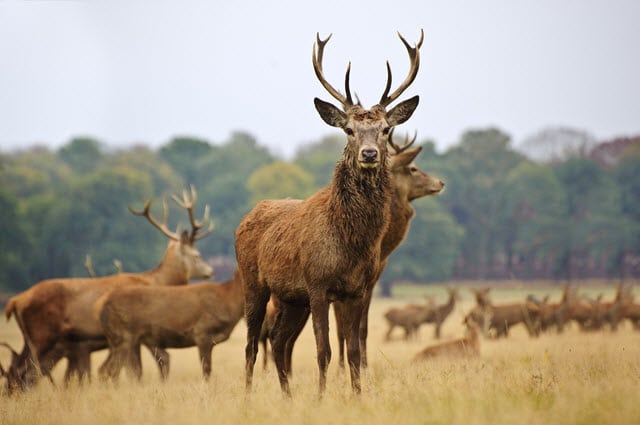
This is a matriarchal type of deer, meaning that one dominant female is the leader. This deer species migrates seasonally, making the herd useful for maintaining safety and keeping the group together.
During the spring months, male and female red deer will separate once the mating season is over. The females will be separate from the males when they give birth. Male red deer live in their own separate herds during the summer.
Red deer are found in many places all over the world, including Europe, some parts of western Asia, Iran, Anatolia, and the Caucasus Mountains region.
There are also red deer populations found in northwestern Africa, specifically between Tunisia and Morocco.
There are also countries and continents where red deer have been introduced, including New Zealand, Australia, Chile, Argentina, Peru, Uruguay, Canada, and the United States.
Not Every Deer Species Lives in Herds
As we’ve seen here, while living in a herd is common across deer species, it’s not universal. There are certain kinds of deer, such as moose, that don’t live in herds.
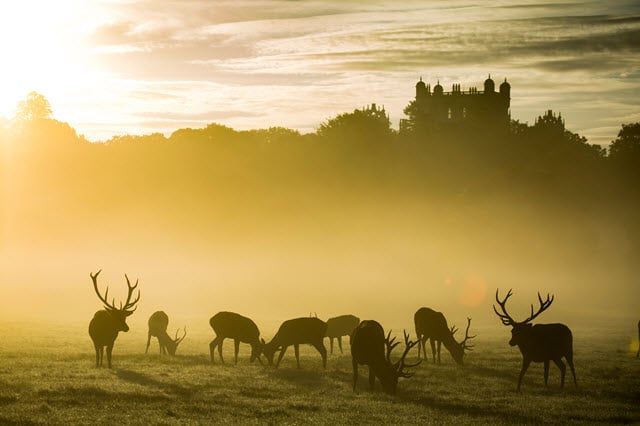
There are also deer species, such as the whitetail deer, which live in different kinds of groups seasonally.
Herd size varies by the type of deer in question, and living in herds helps deer in different ways. For example, mule deer migrate long distances and traveling in a herd is necessary for safety, but generally a deer’s habitat and food supply will play a large role in determining the size of any herd of deer.

